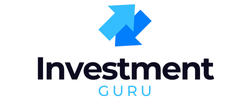In the world of personal finance, understanding your borrowing options can make or break your financial success. Two terms that often create confusion—even among seasoned consumers—are revolving credit and line of credit. Though they sound similar and share overlapping traits, they serve very different purposes.
So, when it comes to knowing what the difference is between revolving credit and line of credit, it’s not just about semantics—it’s about smart borrowing, credit management, and aligning your financial tools with your goals.
Let’s break it down in crystal-clear terms.
Table of Contents
Understanding Credit Basics
Credit, in any form, gives you access to borrowed money with the promise to repay. But not all credit types function the same way. Two of the most flexible and frequently confused credit tools are revolving credit and lines of credit.
At a glance, both give you access to funds you can use as needed. However, they differ in terms of repayment, accessibility, interest rates, and credit impact.
What Is Revolving Credit?
Revolving credit is an open-ended borrowing tool that renews each time you repay the balance. Think of it as a reusable pool of money.
The most common example is a credit card. You’re given a credit limit, and you can spend, repay, and reuse it indefinitely—as long as the account remains in good standing.
Key characteristics:
- No fixed repayment schedule
- Interest accrues on unpaid balances
- Credit limit refreshes as you repay
What Is a Line of Credit?
A line of credit (LOC) is also a borrowing arrangement with a pre-approved limit, but it’s often more structured and used for specific purposes.
LOCs come in several forms:
- Personal Line of Credit
- Business Line of Credit
- Home Equity Line of Credit (HELOC)
Unlike credit cards, lines of credit may have a draw period and a repayment period.
Key Structural Differences
| Feature | Revolving Credit | Line of Credit |
|---|---|---|
| Repayment | Monthly minimums | Structured or flexible |
| Usage Limit | Reusable | May be limited to draw period |
| Expiry | Ongoing | Often expires after a set term |
| Collateral | Usually unsecured | Often secured (like HELOCs) |
How Interest is Charged

With revolving credit, interest is charged on the unpaid balance after a grace period. Credit cards, for instance, may give you 21-25 days before charging interest.
Lines of credit may charge interest as soon as funds are drawn, and the rates can be variable or fixed, depending on the type.
Access to Funds
Credit cards offer instant access via:
- Card swipes
- Online payments
- Cash advances
Lines of credit may require:
- Transfers to checking accounts
- Checks issued from the lender
- Advance requests through online banking
Repayment Flexibility
Revolving credit is typically more flexible:
- Pay the minimum
- Pay in full
- Carry a balance
Lines of credit may have:
- Interest-only payments during draw period
- Fixed payments during repayment period
Impact on Credit Score
Both types impact your credit utilization ratio, but revolving credit is more influential on your credit score, especially if maxed out.
A well-managed line of credit, especially a HELOC, can positively impact your score, particularly if it’s reported to credit bureaus.
Revolving Credit Examples
- Credit cards (Visa, MasterCard, Amex)
- Retail cards (store credit cards)
- Secured credit cards
These tools are excellent for day-to-day spending, building credit, and earning rewards.
Line of Credit Examples

- HELOCs: Secured by home equity
- Business LOCs: Used for cash flow or inventory
- Personal LOCs: Often unsecured, used for emergencies or large purchases
Fixed vs. Variable Interest Rates
- Revolving credit typically carries variable APRs
- Lines of credit can be fixed or variable, depending on the lender and type
Fixed-rate LOCs offer predictable payments, which are better for budgeting.
Open-End vs. Closed-End Credit
- Revolving credit is open-end: reusable and ongoing
- Some LOCs can be closed-end: once repaid, the account closes
This distinction affects how credit bureaus treat the accounts on your report.
How They’re Reported to Credit Bureaus
- Revolving accounts are reported monthly
- Lines of credit may or may not be reported
If your line of credit isn’t reported, it won’t help or hurt your credit score.
Common Fees and Hidden Charges
- Revolving: late payment fees, cash advance fees, foreign transaction fees
- LOCs: annual fees, draw fees, inactivity fees, early closure penalties
Read the fine print before opening either type.
Risks and Downsides
Revolving Credit Risks:
- High interest rates
- Temptation to overspend
- Credit score damage if utilization is high
Line of Credit Risks:
- Variable rates = unpredictable costs
- Secured LOCs put assets (like homes) at risk
- May require requalification upon renewal
Who Should Use Revolving Credit?

Ideal for:
- Everyday purchases
- Reward maximization
- Emergency funds (in moderation)
- Building or repairing credit
Who Should Use a Line of Credit?
Best suited for:
- Home renovations (HELOC)
- Seasonal business expenses
- Large, irregular personal expenses
- Emergency backup for established borrowers
Revolving Credit vs Line of Credit Table
| Feature | Revolving Credit | Line of Credit |
|---|---|---|
| Flexibility | High | Medium |
| Credit Score Impact | High | Medium |
| Usage Purpose | General Spending | Specific Needs |
| Collateral Required | No (usually) | Sometimes |
| Interest Rates | Higher | Lower (if secured) |
| Account Lifecycle | Ongoing | Draw + Repay Period |
| Reusability | Yes | Limited |
| Best For | Everyday Use | Strategic Borrowing |
Which Option Is Better for Building Credit?
Revolving credit wins here. Because it impacts credit utilization directly and reports frequently, managing a credit card responsibly can rapidly improve your score.
A line of credit may help too, but its effect is usually less pronounced, unless heavily used and reported.
What Lenders Look For When Approving
Lenders will examine:
- Credit score
- Income stability
- Debt-to-income ratio
- Credit history
- Collateral (for secured LOCs)
Tax Implications of Each
Only HELOCs used for home improvements may be tax-deductible. Interest on credit cards or personal LOCs generally is not deductible.
Tips for Managing Both Types Responsibly
- Always pay more than the minimum
- Keep utilization below 30%
- Track interest rates and terms
- Avoid borrowing unless necessary
- Review statements and monitor for fraud
Can You Convert One Into the Other?

You can’t directly convert a credit card into a LOC, but some banks offer balance transfers or credit line increases that mimic LOC features.
Likewise, a line of credit cannot be reused indefinitely like a true revolving account.
FAQs
Can a line of credit be used like a credit card?
In some ways, yes—but it lacks features like grace periods and rewards.
Is a HELOC considered revolving credit?
Yes, it’s technically a revolving credit account secured by your home.
Which is better for emergencies?
Credit cards are more immediate; lines of credit are better for large, planned needs.
Does closing a line of credit hurt your credit score?
It can, especially if it reduces your total available credit.
Are credit card cash advances a line of credit?
No, they’re just a feature of revolving credit—with high fees.
Which has better interest rates?
Lines of credit, especially secured ones, generally offer lower rates than credit cards.
Conclusion
When it comes to Revolving Credit vs. Line of Credit, there’s no one-size-fits-all answer. Each serves a unique purpose, and your choice should depend on:
- Your spending habits
- Your credit goals
- Your ability to repay
Revolving credit is better for building credit and everyday flexibility, while lines of credit are excellent for larger, occasional expenses. Understanding the difference can empower you to borrow wisely—and thrive financially.


